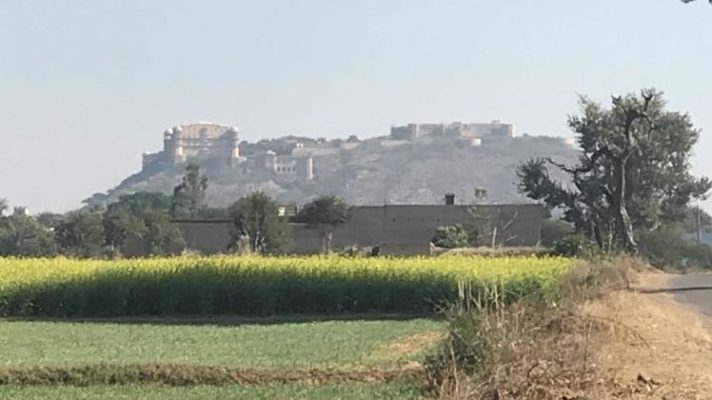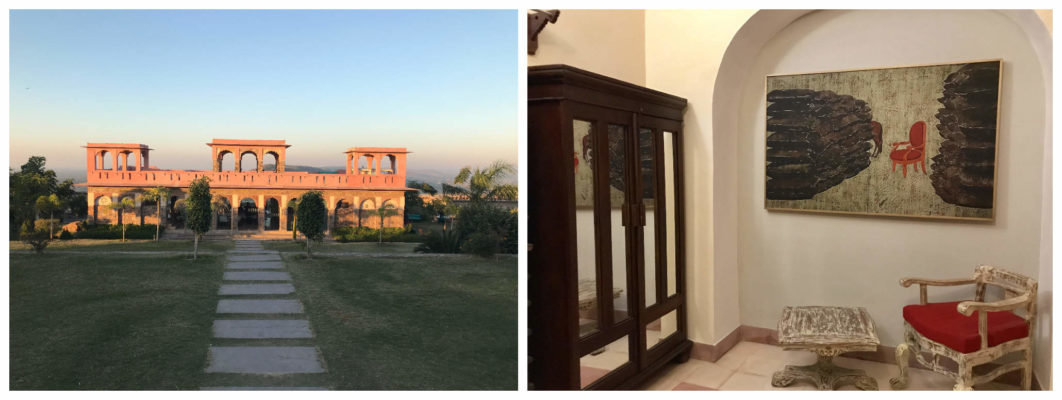Tijara Fort Palace, Kesroli Hill Fort, and Neemrana Fort Palace serve as perfect getaways in the desert state of India

Rajasthan is one of the first places that comes to mind when you think of the best tourist destinations in India. A colourful state, it is renowned for its abundant resources and warm hospitality. Aman Nath, founder of the acclaimed Neemrana Hotels, has put out experiential tourism through each of his ‘non-hotel’ properties. In his life’s journey, he has picked up forgotten ruins and medieval forts, and turned them into 22 remarkable plots.
My Rajasthan trail started with a drive from Delhi to Alwar, a former princely state, now a dusty provincial town. Tijara, my first destination, was on the Delhi–Alwar route. As the car sped by fields of sarson dotted with small tombs, I realised that history had created this inimitable ambience.

Right atop a hillock stands the 19th century Tijara Fort Palace. The whole place looks wonderful and is still seeking completion on the 68 acres it stands on. It was a dream project of Maharaja Balwant Singh who died 13 years after he began building it for his mistress. Today, it has the Rani Mahal and the Hawa Mahal restored and is filled with 61 rooms named after the artists, designers, and aesthetes who created them.

A trip into the local market place is always warranted and a walk through the main Jain Temple is a must. The beautiful Lal Masjid, which lies in ruins, still stands regal as in the days of Babur (1530 AD).

The afternoon was spent at the spa run by Oriental Senses. Tijara Fort Palace has a beautiful pool, conference rooms, lawns made for parties/events and the like. The highlight of its rooms is that each room is different and the art installed in them is highly inspirational.
Hill Fort Kesroli
The next stop was Hill Fort Kesroli, India’s oldest heritage hotel. Dating back to the 14th century, it was built by the descendants of Lord Krishna for security and warfare. It changed hands from the Khanzadas, the Mughals, the Jats to finally rest with the Rajput Ranawats. It is another beautiful property ably surrounded by mustard, wheat, and millet crops. It turned out to be a quaint fort with tunnels and oddly shaped rooms and turrets. It felt like I was living history all over again.

There was a beautiful room high up in the fort overlooking the countryside, from where I could gaze at the azure skyline above. The room was comfortable, with a writing table that beckoned me. Unwinding here was easy with its tranquil ambience. The Durbar Hall offered a bunch of indoor games like chess, carom, cards, and scrabble.

The outdoor area included games by the eight-shaped pool, such as Badminton. The bicycles are for those looking to ride through the fields to experience the authentic village life of the locals. Known to be located in the middle of the ‘Golden Triangle’ (Delhi, Agra and Jaipur), Kesroli is the ideal base for travellers. The City Palace, a perfect blend of Rajput and Mughal architecture, is bang in the middle of city’s functionalities, between government offices and district courts. A beautiful museum is housed in the upper storeys. The Moosi Maharani ki Chhatri is a cenotaph filled with pavilions and domed arches and is rated as one of the finest plaques.

A must on the itinerary is Siliserh Lake (the Water Palace), that is surrounded by thick forests and was once a royal hunting lodge built by a king for his queen (1845). The Bala Qila, though now deserted, was once a towering fort that once crowned Alwar. What came next totally blew me away. We were close to the jungles and the Sariska Tiger Reserve covering 800sq m proved to have a variety of landscapes, ranging from grasslands to cliffs and rocky land. It was invigorating even though we did not sight the striped beast. It was a day well spent in Alwar.
Neemrana Fort Palace
I was now all geared to travel another one and a half hours to be at Neemrana, which was where the flagship property was. The Neemrana Fort Palace is a beautiful 15th century fort that has been listed on the ‘100 things you must do on the planet before you leave it!’. Another obscure ruin spread across 25 acres of land, restored and built to house 14 levels with 72 rooms/suites, it also boasts of two outdoor swimming pools.

The first day I checked out the six acres of the palace, taking in the Hanging Gardens, the balconies, the different Mahals, etc. The spa and the health club are a must, as the hotel’s hospitality extends to their wonderful cuisines and health preferences. I personally recommend the Maha Burj gold platter thali for Rajasthani cuisine.

Climbing up and down staircases seems a bit daunting, and so the Palkhi is offered by the hotel for those who require it. Camel rides and camel cart rides take guests to the historic parts of the town. The Step Well, perhaps once used as a spa for the royals is one such place that was built for the queens. Underground tunnels served as roads for their leisure activities. The Maharaja’s Bentley was used to ride into the little town. Among the things to do at the great Neemrana Fort Palace, try the first Zipline in India.

As I looked out of my beautiful suite overlooking the immense landscape of Neemrana, strains of Sufi music wafted in to fill my abode. The place serves as a perfect wedding destination for couples who are interested in a historic setting.
At the end of the day, the fabulous sunset, exuded an air of mystery and opulence with a promise of the past infused in the shimmer of a bright and interesting future. Just the right message at the end of a journey!

Previously published in FWD Lifestyle
Image Credits : Maya Lalchandani, FWD Life



